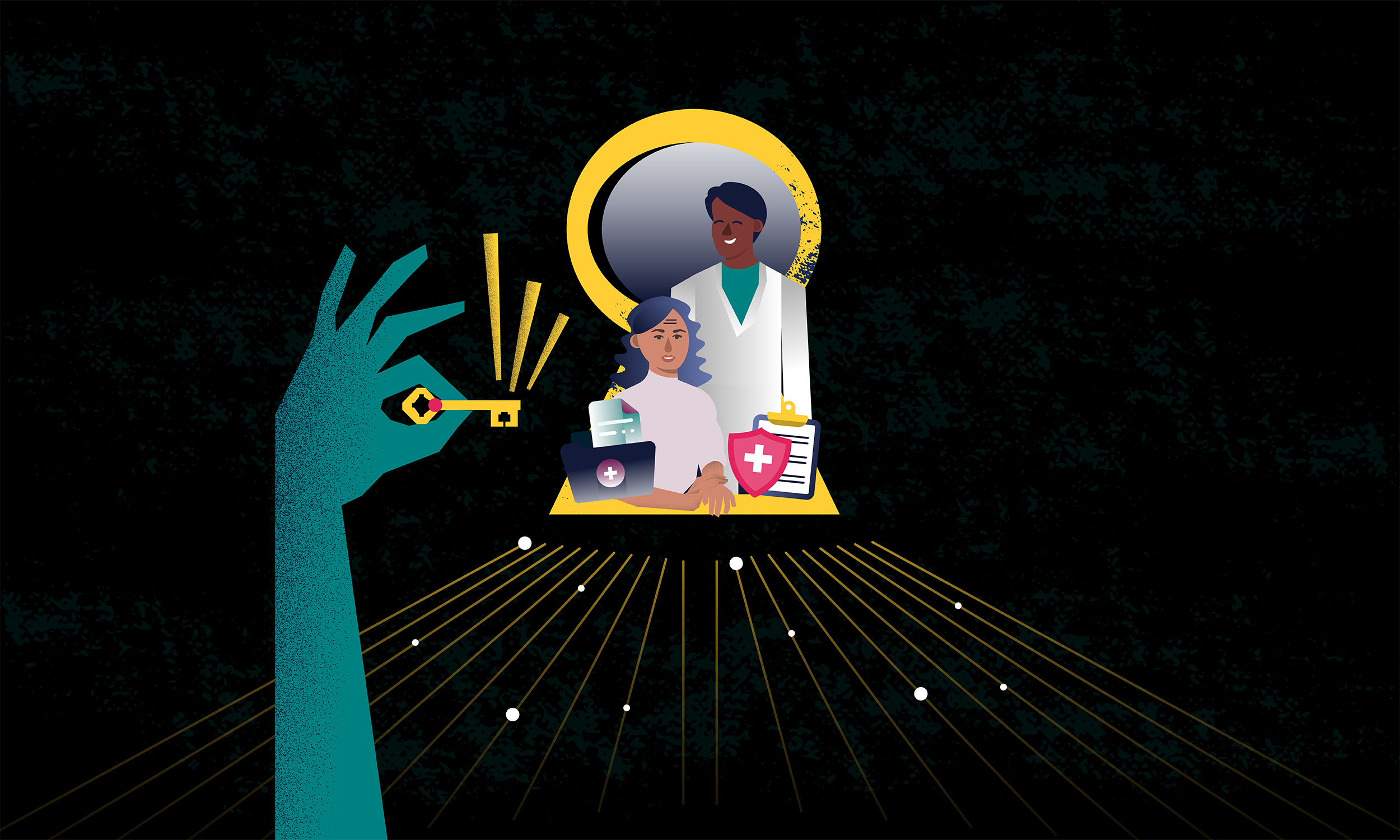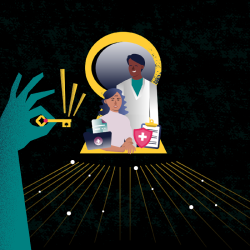Putting Health Equity Within REACH: How IT Unlocks Better Care for All Americans

According to the Centers for Disease Control and Prevention (CDC), “Rural Americans are more likely to die from heart disease, cancer, unintentional injury, chronic lower respiratory disease, and stroke than their urban counterparts.”
CDC data also reveal that the life expectancy for Black and African American people is four years lower than that of white Americans. Non-Hispanic American Indians or Alaska Natives were 2.7 times more likely to need a hospital stay due to COVID-19 than non-Hispanic white people.
This is just a small sample of the health disparities that exist across different demographics in the United States. Reducing those disparities will lead to a healthier nation, and it will address the very first of the CMS Strategic Plan’s six pillars: “Advance health equity by addressing the health disparities that underlie our health system.”
The key to unlocking those disparities is data.
Doing Well by Doing Good Data
Only with good data can providers understand what all the health disparities are and across what domains – race, ethnicity, tribal sovereignty, disability, sexual orientation, gender identity, socioeconomic status, geography, preferred language, or other factors that affect access to care and health outcomes. Data can provide a better picture of the social determinants of health (SDOH) – the environmental contexts that impact health outcomes. Lastly, good data will also provide insight into which interventions or service provider models improve outcomes.
Just about every office across CMS is involved in the effort to collect data, learn from it, and then apply that knowledge to testing new payment and service delivery models. There are all sorts of challenges to address, including legal questions about who can collect what information, policy decisions about data standards, and the technical challenges of interoperability and data management.
Enter 4i and ACO-OS
On the latter, OIT has an important role to play. In fact, the Division of Application Development & Support (DADS) in the Enterprise Systems Solutions Group (ESSG) has developed an important interface and backend system to support innovation models with the goal of achieving better care for patients, smarter spending, and healthier communities.
The interface is called 4Innovation (4i) and the management repository system that handles the collection and exchange of data is called the Accountable Care Organization – Operational System (ACO-OS).
Accountable Care Organizations incentivize health care providers to become accountable for a patient population and to invest in infrastructure and redesigned care processes that provide for coordinated care and high-quality, efficient service delivery. In other words, they require service providers to improve care by working cooperatively, and their payment models (or, in policy speak, “financial risk-sharing arrangements”) incentivize better outcomes, including reductions in inequities for Medicare beneficiaries.
Ideally, ACOs also reduce Medicare fee-for-service expenditures. For example, the Medicare Shared Saving Program is a voluntary program that encourages groups of doctors, hospitals, and other health care providers to come together as an ACO to give coordinated, high-quality care to their Medicare beneficiaries.
4i is used by entities in certain Innovation Center models to manage their operations. A couple of the CMMI Models in 4i are ACO REACH (Realizing Equity, Access, and Community Health) and KCC (Kidney Care Choices). 4i and ACO-OS pave the way for CMS to communicate with providers. The system stores and exchanges ACO entity demographic, provider, claim and beneficiary data with ACO entities and CMS systems such as Master Data Management, Enterprise Data Lake, and Fee-for-Service (FFS) Shared System Maintainers (SSMs).
The ACO-OS generates and shares the claims data for over 14 million Medicare beneficiaries every month. The claims data and reports generated by ACO-OS are shared through the Data Hub feature in the 4i platform for CMMI models and ACO-Management System (ACO-MS) for Medicare Shared Savings Program.
A Strong Partnership
Anusha Sathyanarayan, DADS ESSG IT Specialist, refers to ACO and 4i as “the nuts and bolts of the CMMI models.”
In order to operate 4i and ACO-OS, Sathyanarayan works hand-in-hand with counterparts at CMMI.
“The CMMI folks play a critical role in development and testing of innovative health care payment and service delivery models,” she says. “They explain their requirements and we make it happen by managing all the users and entities, improving processes, increasing efficiencies, and securing PHI and PII.”
The policy experts at CMMI want to figure out which beneficiaries will benefit most from which models. One of the participant programs, ACO REACH, is designed specifically to address inequities. The goals of REACH ACOs are to cover more people, narrow disparities, and measure progress. In order to gauge inequities and reward providers for effective care, CMS needs robust data reporting.
“One of the rewarding challenges of my job,” says Sathyanarayan, “is tying together technical, business, and functional goals into one product. We have to strategize at a high level. Bringing Human-Centered Design and Agile methodologies into the development process is critical.”
Just the Beginning
On February 16, President Biden signed the Executive Order on Further Advancing Racial Equity and Support for Underserved Communities Through Federal Government. It extends an order he signed on his first day in office by requiring that Cabinet-level Secretaries, including Health and Human Services, to establish Agency Equity Teams that include a senior technology official.
It also mandates the implementation of recommendations created by the Interagency Working Group on Data established in the original order. The Working Group’s mandate was to facilitate the process of disaggregating data into demographic categories.
CMS is still in the very early stages of building a data infrastructure that supports the executive and agency-level priorities of reducing inequities and better serving historically marginalized communities.
According to Sathnayarayan, OIT’s role will be indispensable in working with business partners to innovate and deliver value-driven and scalable IT solutions and services.
Sathyanarayan said that she and her team are currently exploring how to intake health equity data within 4i.
“Health equity is a learning experience for us,” she says. “There is much more work to be done.”

